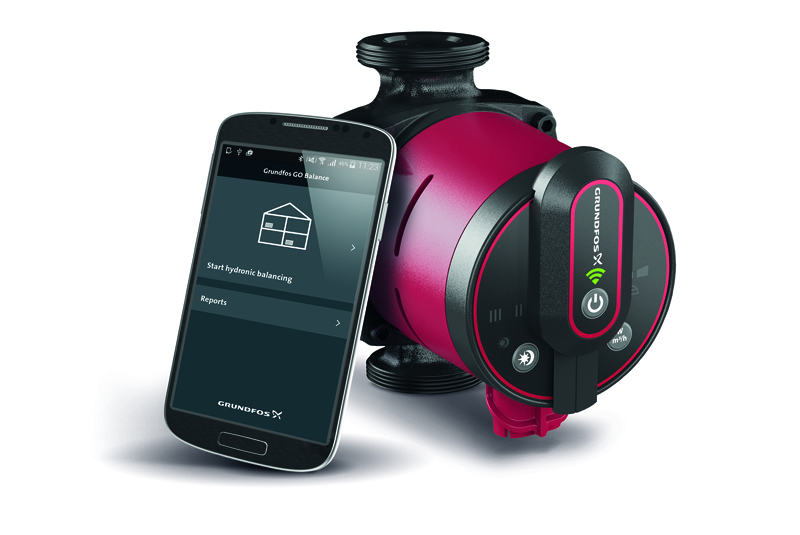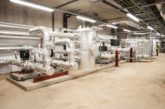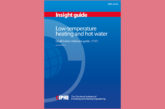
Grundfos Pumps recently collaborated with the Chartered Institute of Plumbing and Heating Engineering for a techtalk which discusses system balancing. Linda Dingley, Marketing Manager at Grundfos, offers insight into the latest product developments and how this has impacted the market.
The role of the pump
The humble domestic circulator has been through many changes since it was initially introduced back in the 1950s. These changes have accelerated dramatically in recent years. This is as a result of engineering and technological advances as well as changes to legislation, which have seen some pumps disappear from the market and more compact and efficient models enter it.
We all know pumps play an important role as they are at the very heart of maintaining the ideal ambient temperature in people’s homes and when you consider that the replacement cycle is approximately 15 years, the decision made at the point of replacement is a very important one. However, we are all also aware that when it comes to the point of replacement, it is frequently the case that pump details are taken directly from the pump name plate and an identical or closest equivalent pump is purchased, without considering factors such as improved energy or efficiency ratings of new generation models.

New product development
The major players in this market are continuing to invest in R&D and new product development. This has culminated in many significant improvements in the circulator market over recent years, particularly in terms of improved energy consumption. Today the market has taken another step forward and there is a new kid on the circulator block. This newly introduced domestic circulator model has really upped the game as it brings to the market – not just a reliable and durable circulator but one that can deliver the added benefit of offering substantial savings on heating bills through a process that simplifies hydronic balancing.
This newest addition will continue to deliver all the standard benefits of reliability, efficiency and easy installation. But it is its world-class energy efficiency with an EEI rating of 0.17 that means it can cut heating and energy costs as well as the combined ability to deliver flow based balancing that can save hours, which really sets it apart.
You hear two different terms relating to this type of balancing – hydraulic balancing and hydronic balancing. Either term can be used within this context, as hydraulics relates to the field of fluid mechanics and hydronics to the field of liquid based heating and cooling systems.
System balancing
To achieve system balancing, the new way to do this means that you will need a combine a number of elements – i.e. the applicable domestic circulator, a reader and an app.

So how does it work? There is a built-in one-way communication capability in this new generation pump that together with a specialist reader and a balancing app allow for easy and quick hydronic balancing of a domestic two-pipe radiator system. This actually now means that flow-based balancing of a heating system no longer has to be overly complicated and time-consuming and this can be achieved in just simple three steps.
The reader is a pocket-sized device that you attach to the front of the applicable circulator. It reads a light signal from the pump and communicates with the balance app via Bluetooth during the balancing process. Once the hydronic balancing is complete, installers can simply take the reader with them to their next job.
This type of app can normally be downloaded from iTunes or Google Play. A big plus for this approach is that a mobile platform for hydronic balancing is designed to save valuable time on hydronic balancing, reporting and data sharing. The app picks up the Bluetooth signal from the reader and guides installers through some simple balancing steps.
The system balancing is broken down into three simple steps:
Step one
Set up the system and measure the flow with all radiators closed
Step two
Input room and radiator data
Measure base flow for the radiator(s).
Step three
Adjust balancing valves to the correct settings by viewing the radiator flow rate live on the app on your smart phone.
When the system has been balanced, you can have the option of accessing a report which you can save for future reference or send it as an email. The pump performance is then optimised and its output will reduce the pump’s energy consumption and in turn your customers’ energy bills.
Summary
These new systems can save you hours of work and hydronic balancing can cut your customers’ heating bill by up to 17%. Plus the whole thing will take a couple of hours in an average home – which is a lot less than it would to do a full hydronic balancing the old-fashioned way. Moreover, they work for every part of a heating system – including underfloor heating – without compromising on reliability, efficiency and easy installation.
To find out more about this latest innovation as well as the wider range of pump solutions available from Grundfos, visit: www.grundfos.co.uk
To access more techtalks from the CIPHE, subscribe to the Institute’s YouTube channel. For membership enquiries, contact the team via email at [email protected] or call 01708 472791












